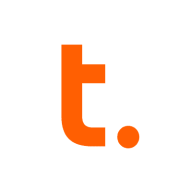


Find out what your peers are saying about Snowflake Computing, Microsoft, Google and others in Cloud Data Warehouse.
Whenever we need support, if there is an issue accessing stored data due to regional data center problems, the Amazon team is very helpful and provides optimal solutions quickly.
It's costly when you enable support.
I received great support in migrating data to Snowflake, with quick responses and innovative solutions.
The technical support from Snowflake is very good, nice, and efficient.
The technical support from Teradata is quite advanced.
Customer support is very good, rated eight out of ten under our essential agreement.
The scalability part needs improvement as the sizing requires trial and error.
Snowflake is very scalable and has a dedicated team constantly improving the product.
The billing doubles with size increase, but processing does not necessarily speed up accordingly.
This expansion can occur without incurring downtime or taking systems offline.
Scalability is complex as you need to purchase a license and coordinate with Teradata for additional disk space and CPU.
Amazon Redshift is a stable product, and I would rate it nine or ten out of ten for stability.
Snowflake is very stable, especially when used with AWS.
Snowflake as a SaaS offering means that maintenance isn't an issue for me.
I find the stability to be almost a ten out of ten.
The workload management and software maturity provide a reliable system.
Integration with AI could be a good improvement.
They should bring the entire ETL data management process into Amazon Redshift.
Enhancements in user experience for data observability and quality checks would be beneficial, as these tasks currently require SQL coding, which might be challenging for some users.
Cost reduction is one area I would like Snowflake to improve.
Unlike SQL and Oracle, which have in-built replication capabilities, we don't have similar functionality with Teradata.
It's a pretty good price and reasonable for the product quality.
The cost of technical support is high.
The pricing of Amazon Redshift is expensive.
Snowflake's pricing is on the higher side.
Snowflake lacks transparency in estimating resource usage.
Initially, it may seem expensive compared to similar cloud databases, however, it offers significant value in performance, stability, and overall output once in use.
Teradata is much more expensive than SQL, which is well-performed and cheaper.
Scalability is the best feature of Amazon Redshift. Amazon Redshift handles scalability automatically, so we do not need to scale up or down; it is all managed by Redshift.
Scalability is also a strong point; I can scale it however I want without any limitations.
Amazon Redshift's performance optimization and scalability are quite helpful, providing functionalities such as scaling up and down.
The independence of the compute and storage within Snowflake is key.
One key feature is the separation of compute and storage, which eliminates storage limitations.
The data mover is valuable over the last two years as it allows us to achieve data replication to our disaster recovery systems.
| Product | Market Share (%) |
|---|---|
| Snowflake | 17.7% |
| Teradata | 8.7% |
| Amazon Redshift | 7.5% |
| Other | 66.1% |



| Company Size | Count |
|---|---|
| Small Business | 27 |
| Midsize Enterprise | 21 |
| Large Enterprise | 27 |
| Company Size | Count |
|---|---|
| Small Business | 28 |
| Midsize Enterprise | 20 |
| Large Enterprise | 56 |
| Company Size | Count |
|---|---|
| Small Business | 25 |
| Midsize Enterprise | 12 |
| Large Enterprise | 49 |
Amazon Redshift is a fully administered, petabyte-scale cloud-based data warehouse service. Users are able to begin with a minimal amount of gigabytes of data and can easily scale up to a petabyte or more as needed. This will enable them to utilize their own data to develop new intuitions on how to improve business processes and client relations.
Initially, users start to develop a data warehouse by initiating what is called an Amazon Redshift cluster or a set of nodes. Once the cluster has been provisioned, users can seamlessly upload data sets, and then begin to perform data analysis queries. Amazon Redshift delivers super-fast query performance, regardless of size, utilizing the exact SQL-based tools and BI applications that most users are already working with today.
The Amazon Redshift service performs all of the work of setting up, operating, and scaling a data warehouse. These tasks include provisioning capacity, monitoring and backing up the cluster, and applying patches and upgrades to the Amazon Redshift engine.
Amazon Redshift Functionalities
Amazon Redshift has many valuable key functionalities. Some of its most useful functionalities include:
Reviews from Real Users
“Redshift's versioning and data security are the two most critical features. When migrating into the cloud, it's vital to secure the data. The encryption and security are there.” - Kundan A., Senior Consultant at Dynamic Elements AS
“With the cloud version whenever you want to deploy, you can scale up, and down, and it has a data warehousing capability. Redshift has many features. They have enriched and elaborate documentation that is helpful.”- Aishwarya K., Solution Architect at Capgemini
Snowflake provides a modern data warehousing solution with features designed for seamless integration, scalability, and consumption-based pricing. It handles large datasets efficiently, making it a market leader for businesses migrating to the cloud.
Snowflake offers a flexible architecture that separates storage and compute resources, supporting efficient ETL jobs. Known for scalability and ease of use, it features built-in time zone conversion and robust data sharing capabilities. Its enhanced security, performance, and ability to handle semi-structured data are notable. Users suggest improvements in UI, pricing, on-premises integration, and data science functions, while calling for better transaction performance and machine learning capabilities. Users benefit from effective SQL querying, real-time analytics, and sharing options, supporting comprehensive data analysis with tools like Tableau and Power BI.
What are Snowflake's Key Features?In industries like finance, healthcare, and retail, Snowflake's flexible data warehousing and analytics capabilities facilitate cloud migration, streamline data storage, and allow organizations to consolidate data from multiple sources for advanced insights and AI-driven strategies. Its integration with analytics tools supports comprehensive data analysis and reporting tasks.
Teradata is a scalable data analytics platform designed to meet enterprise demands for large-scale data management and processing, focusing on performance, scalability, and security for complex query executions.
As a leading data warehousing solution, Teradata integrates advanced analytics enabling organizations to derive insights from massive datasets. It supports high-volume data workloads with its architecture optimized for analytical queries. Users benefit from its robust scalability, allowing seamless expansion as data grows. Teradata's SQL engine is compatible with a wide range of data types, ensuring flexibility in data analysis. With advanced security measures, it protects sensitive data across various environments, providing peace of mind to users handling critical information.
What are the most important features of Teradata?Teradata is widely used in industries like finance, telecommunications, and healthcare, where data-driven decisions are critical. Companies leverage its robust analytics capabilities to enhance customer experiences, streamline operations, and ensure compliance with regulatory requirements. In these sectors, quick access to data insights can significantly impact competitive advantage.